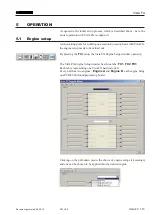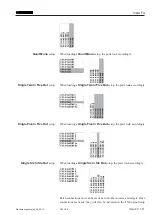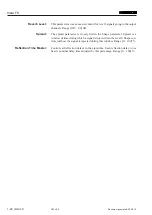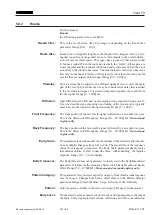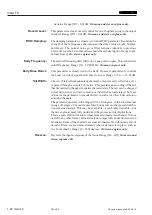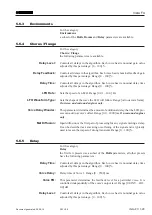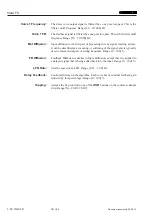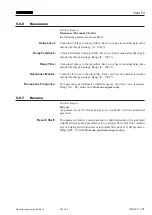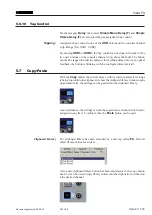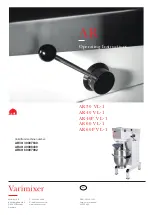
Vista FX
Vista FX 1-27
Document generated: 28.08.14
SW V4.9
5.6.2
Rooms
For the category
Rooms
the following parameters are available :
Reverb Time :
This is the reverb decay time. The range is depending on the Room Size
parameter. Range [0.11 .. 210] s.
Room Size :
Room Size corresponds roughly to the length of the longest wall of a rect-
angular room. In a more general sense, it corresponds to the overall dimen-
sion of some mythical space. This space has a geometry that causes sound
to bounce around. When the room size is small, the “walls” of this space are
closer together and the resultant reflection density increases. When the room
size is large, that density decreases. The most natural reverbs use room sizes
that vary from about 24 meters to 45 meters or so, but there are many useful
reverbs that are outside of this range. Range [2.0 .. 80.0] m
Predelay
: This is a delay that is added to the diffused signal before it enters the main
part of the reverb. For all intents, it may be considered as delay that is added
to the reverberated signal. It is used to temporally separate the reverb from
the dry signal. Range [0 .. 1000] ms.
Diffusion :
Input diffusion is the first part of processing for any signal entering a reverb.
It can be described as a smearing or softening of the signal and is typically
used to lessen the impact of strong transients. Range [0 .. 100] %.
Front Frequency :
The front portion of the late reverb signal is filtered by a one pole low-pass.
This is the filters cutoff frequency. Range [50 .. 20’000] Hz.
On surround
engines only.
Back Frequency :
The back portion of the late reverb signal is filtered by a one pole low-pass.
This is the filters cutoff frequency. Range [50 .. 20’000] Hz.
On surround
engines only.
Early Scale :
This parameter is used to modify the overall time of the selected early impulse.
It is a multiplier that goes from 0.5x to 2.0x. The actual time of the responses
varies from response to response. The Early Scale parameter simply scales
that amount of time. It’s fair to describe this a “rubber-banding” the impulse
response. Range [0.5 .. 2.0] multiplier.
Early Crossover :
The Early (Bass) Crossover parameter is closely tied to the Early Bass Boost
parameter. It represents the frequency below which Early Bass Boost has an
effect. Range [50 .. 10’000] Hz.
On mono and surround engines only.
Pattern Category :
This parameter lets you select a specific category from which a room response
may be chosen. Changes here have a direct effect on the Pattern Selector
parameter. Range [Small, Medium, Large, Exteriors, Odd, Artificial]
Pattern :
Selects a space available in the selected Category. Range [various spaces]
Early Level :
This parameter acts as a master control for any early signals going to the output
channels. Early signals include echoes, reflections, and the room reflection

